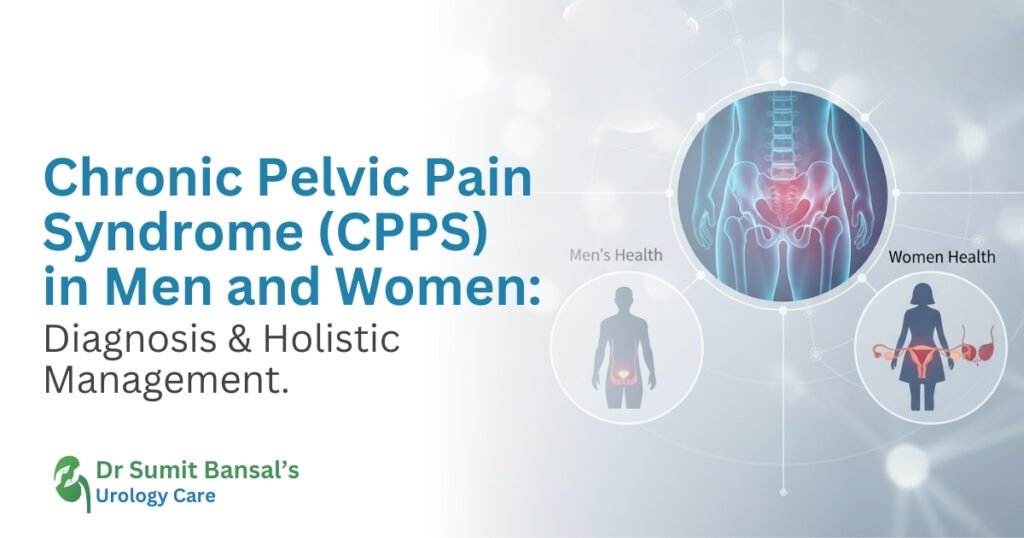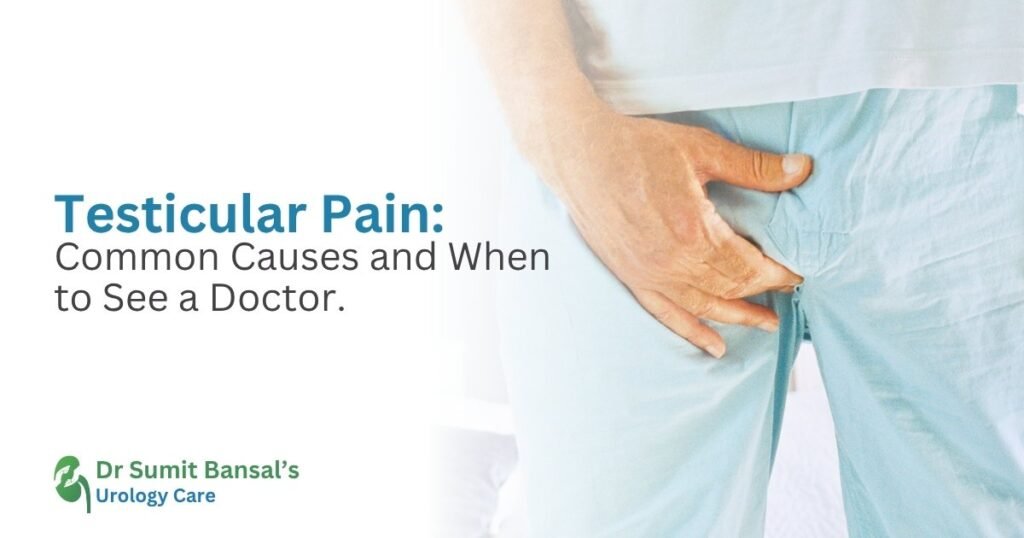Chronic Pelvic Pain Syndrome (CPPS) is a complex, often misunderstood condition characterized by persistent pelvic discomfort lasting six months or more. Affecting approximately 15% of women and 10% of men globally, CPPS can significantly impact daily activities, including work, intimacy, and overall quality of life
🔍 Understanding CPPS
CPPS manifests differently in men and women, often involving a combination of urological, gynecological, gastrointestinal, and musculoskeletal symptoms. Common presentations include:
Men: Testicular or penile pain, discomfort during or after ejaculation, urinary urgency or frequency, and lower abdominal pain
Women: Lower abdominal pain, painful intercourse, pelvic heaviness, and urinary or bowel symptoms
🩺 Diagnosis: A Comprehensive Approach
Diagnosing CPPS requires a thorough evaluation, often involving:
Detailed medical history: Assessing symptom onset, duration, and associated factors.
Physical examination: Including pelvic and neurological assessments.
Laboratory tests: To rule out infections or other underlying conditions.
Imaging studies: Such as ultrasound or MRI, if indicated.
Given the multifaceted nature of CPPS, a multidisciplinary approach is often necessary for accurate diagnosis and effective management.
🌿 Holistic Management Strategies
A holistic, biopsychosocial approach is increasingly recognized as beneficial in managing CPPS. This approach integrates medical, physical, and psychological interventions tailored to the individual’s needs . Key components include:
1. Physical Therapy
Targeted pelvic floor physical therapy can help address muscle dysfunction, improve flexibility, and reduce pain. Techniques may include:
Myofascial release: To alleviate muscle tightness and trigger points.
Biofeedback: To promote awareness and control of pelvic floor muscles.
Stretching and strengthening exercises: To enhance muscle function and reduce discomfort
2. Pharmacological Interventions
Medications may be prescribed to manage pain and inflammation, including:
Nonsteroidal anti-inflammatory drugs (NSAIDs): For pain relief.
Alpha-blockers: To relax pelvic floor muscles in men.
Antidepressants or anticonvulsants: For neuropathic pain management.
3. Psychological Support
Cognitive-behavioral therapy (CBT) and other counseling services can help address the psychological aspects of CPPS, such as anxiety, depression, and stress, which may exacerbate symptoms
4. Complementary Therapies
Some individuals find relief through alternative treatments, including:
Acupuncture: May help reduce pain and improve pelvic function.
Low-intensity extracorporeal shockwave therapy (LI-ESWT): Emerging evidence suggests potential benefits in reducing CPPS symptoms
5. Lifestyle Modifications
Adopting healthy lifestyle practices can support overall well-being:
Dietary adjustments: Identifying and avoiding trigger foods.
Regular exercise: To improve pelvic health and reduce stress.
Adequate sleep: Essential for pain management and recovery.
🩺 Dr. Sumit Bansal: Expert Care in Gurugram
For residents of Gurugram and surrounding areas, Dr. Sumit Bansal offers specialized urological care, including the management of CPPS. With over a decade of experience, Dr. Bansal is proficient in minimally invasive urological procedures and is dedicated to providing compassionate, patient-centered care



